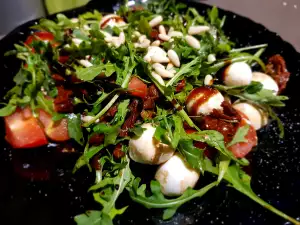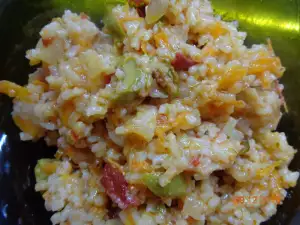How to make
Mix 3.5 oz (100 g) of flour, 1/2 cup (100 ml) of water, the yeast and sugar together. Let it rest for 5-7 minutes for the yeast to activate.
We suggest you use your food processor if it has a kneading function, since this dough tends to be quite wet and sticky.
Add the remaining water to the activated yeast mix, and sift in the flour and salt. Let your food processor knead for two minutes, and allow the dough to rest for ten minutes. Repeat this action three times. ( 2 min kneading, 10 minutes rest)
Allow the dough to double in volume, and place it on a well floured surface with the help of a spatula.
Grease your hands with olive oil, and fold the dough by holding the edges and folding towards the middle, just like an envelope. Again let it rest for 15-20 minutes and fold again.
Fold in the sun-dried tomato paste in between the layers. You can prepare it by chopping the sun-dried fomatoes finely and mixing them with a little olive oil and basil.
Arrange the olives on top, dust with flour and transfer your ciabatta into a baking tray with parchment paper. Don't worry if your chapata is not perfectly shaped, this bread is famous for its irregular and slightly rectangular shape, due to all the folding. Allow it to double in size again.
Preheat the oven to 480°F (250 degrees) without using the fan. Place a clay pot with water in the oven to generate steam.
Bake the bread for 15 minutes at that temperature and then reduce the temperature to 320°F (160 degrees) and turn on the fan. Keep baking for around 15 minutes, or until a toothpick comes out clean, and the crust turns golden brown.
Cool on a rack and slice.
Enjoy!















